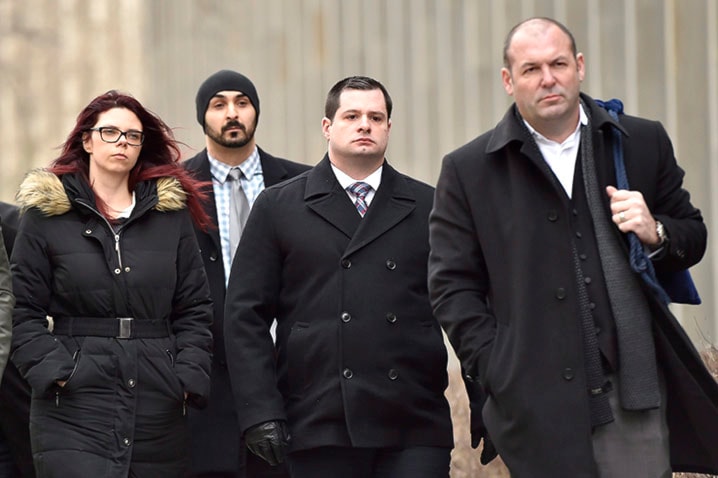TORONTO — A Toronto police officer has been found guilty of attempted murder in the 2013 shooting death of a troubled teen on an empty streetcar, an incident that sparked public outrage and street protests in the city.
After six days of deliberations, the 11-member jury cleared Const. James Forcillo of the more serious charge of second-degree murder in the death of 18-year-old Sammy Yatim in July 2013.
"This has been a long and arduous process for all of us," said Superior Court Justice Edward Then, who presided over the three-month trial.
Forcillo's lawyer Peter Brauti indicated the defence will try to have the proceedings stayed -- which happens after a finding of guilt but before a conviction is registered. It disentitles the state to a conviction because of an abuse of process.
"We say the abuse of process is Const. Forcillo substantially followed the police training he was given and so if the state gave him that training, they should not be entitled to a conviction in the matter," Brauti said outside the courthouse. "This is Phase 1 of a long road for us."
The 32-year-old officer had pleaded not guilty to both charges in the shooting incident, which was captured on cellphone videos and went viral online.
The public outrage over the incident -- hundreds of people took to the streets of downtown Toronto to protest what they called police brutality -- prompted the city's police chief to launch a review of officers' use of force and their response to emotionally disturbed people.
Crown prosecutors had argued Forcillo's actions weren't necessary or reasonable, while his lawyer called those actions justified and carried out in self-defence.
The jury heard that Yatim had consumed ecstasy at some point before boarding a streetcar, where videos showed him exposing himself and pulling out a small knife, causing panicked passengers to pour out of the vehicle when it came to a stop.
No one was injured in the melee and Yatim remained on the streetcar, conversing at first with the vehicle's driver, but he grew aggressive at the sound of approaching police sirens.
Forcillo -- the first officer on the scene -- approached with his gun drawn and screamed repeatedly at Yatim to drop the knife, but the teen refused and swore at police, court heard.
When Yatim took a few steps back from the top of the streetcar steps, Forcillo issued a warning for him not to take another step forward. Yatim then moved back to where he had been standing and Forcillo fired three times, causing the teen to collapse.
The jury has heard that Forcillo then fired six more shots at Yatim.
The entire encounter lasted about 50 seconds. Yatim was hit by eight out of nine bullets fired by Forcillo.
The second-degree murder charge against the officer relates to the first three shots he fired, while the attempted murder charge pertains to the second volley.
Forcillo told the court he believed the knife-toting teen was about to come off the streetcar to attack him, which was why he fired.
The Crown had argued that Forcillo was a "hothead and a bully" who ignored other viable use-of-force options when he shot Yatim, but the defence said the prosecution was simply trying to criminalize a judgment call made by a first responder.
The Toronto police union said it was concerned about the jury's decision.
"It sends a chilling message to our members and that's going to be a challenge for our frontline members to deal with this issue. has definitely the psyche of front line officers," said union president Mike McCormack.
Mark Saunders, the Toronto police chief, said Monday he can't comment on the verdict, but added "what we have done is examine the way in which we use force."
Security was heightened during Forcillo's trial, with plainsclothes police escorting the officer in and out of the courtroom. There was increased police presence outside the courthouse as the end of the trial approached.
